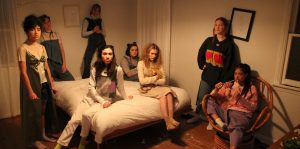
In an industry saturated with borderline-indistinguishable fare that panders to audience expectations, it’s refreshing to see an independent feature operating according to its own demented logic and strives to say something different. Writer/director Amanda Kramer’s phantasmagoric feature Ladyworld – complemented by Callie Ryan’s piercing, relentlessly dark, yet beautiful ambient drone score – surely stands out in the crowd, marking the arrival of a visionary talent. Set in the aftermath of a possible earthquake, it focuses on a group of female teens, who are stuck together in a sealed-off house. As days pass and the food supplies dwindle, emotions flare, and sanity dissipates. I chat with Amanda and her co-writer and editor, Ben Shearn, about #MeToo, Darren Aronofsky and the perils of filmmaking.
Ladyworld is highly unusual – in terms of setting, pacing, the themes it explores, its tone – with a brazen disregard for conventional narrative tropes. It leaves a scalding mark, akin to, say, Darren Aronofsky’s similarly feverish Mother! Was it one of your goals: to shock people, to have this film function as a wake-up call?
Amanda Kramer: I love Mother! It was the perfect mix of artist vanity, actress obsession, self-mythologizing, total confusion, inside jokes, concept catharsis, and middle finger mentality. It’s becoming increasingly more important to helm a “messterpiece” — the kind of film you fling yourself at with boldness and thrill and flair only to miss your audience’s acceptance within the first ten minutes. If that’s failure, then I’m happy to fail alongside him.
Shocking people rules. Especially when it’s the conceit rather than the easy-grab visual aesthetic. Of course, the shock of taboo is deeply out of vogue now. Being transgressive, subversive, punk – I’d have no better luck shaking that in favor of modern times than I would shooting a film in the au courant slick hi-def style. Self-policing because you want to live in the contemporary world (which means respecting humans and histories) is always the goal, but policing art should never be. We are not social workers. We are provocateurs. Hopefully…
Wake up from what though? Even nightmares are dreams.
Ben Shearn: What could I possibly add to that? Amanda, you are the Messter.
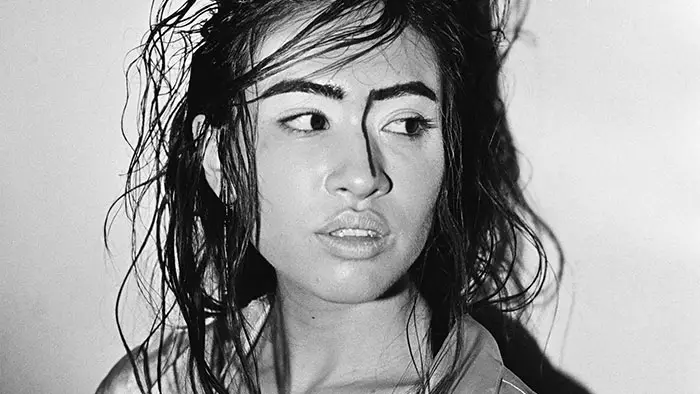
“…a film set for destruction, designed to go boom.”
Ladyworld seems to bask in its female empowerment at first until claustrophobia, paranoia, resentment, and madness creep in. Would you call it a cautionary tale?
Amanda: Definitely not. It’s got no lesson to teach. It’s a film set for destruction, designed to go boom. The jerky turning of the ungreased gears, a tightening with the rusty wrench – that’s what we’re attempting to do. They were never going to be friends. But how much intensity can we build and build on before they become enemies?
Ben: Yeah, there is definitely no moral to Ladyworld. It’s more of an expression of theme and, hopefully, an experience.
A rivalry of sorts forms between the film’s two leaders, Olivia and Piper, with the group splitting into two factions. The former seems to represent a more stable, sensible aspect of what we perceive as “traditional feminism,” while the latter portrays it gone berserk: all copious amounts of mascara and vengeful, nihilistic attitudes. In the #MeToo era, would you consider yourselves post-feminists? If so, can you elaborate?
Amanda: I’d rather be thought of in terms of whether I’m a structuralist, a minimalist, an expressionist, a surrealist – but post-feminism does sum up the themes in the film. Because of my age and specifically my coming of age to the soundtrack of Bikini Kill and L7, I’ve always considered myself a dyed-in-the-wool third-wave feminist. Now the banner of “feminism” is a turn off for many reasons – the most notable being its cannibalistic nature and obsession with victimhood. Nihilistic might be the most apt word used about the film yet. I don’t want to waste my art space being “fair” to anyone. The point is to challenge and provoke, to begin discussions/debates, not end them.
Ben: Amanda once said to me, “I don’t make ‘female-centric’ films. I make FILMS… with characters… who are female.”
The threat of “the man” is always present in the film, although we barely actually see “him.” Does he signify damnation or salvation in Ladyworld – or neither?
Amanda: Rapephobia is felt in nearly all women. I say this without ambiguity: ALL WOMEN. Merely the threat of a man, of his c**k and what he feels is his right to do with it, can overwhelm and intimidate to the point where women become guided by deep mistrust, panic, and even revulsion. Our man is hurt and dying. He needs these girls to save him, not the other way around. But they’re far too caught up in his expected/predicted sexual deviancy to attempt communication. And they’re caught up in it because it’s an intrinsic suspicion/anxiety. That’s the horror if there is any. He represents DREAD.
Ben: The Man is purely symbolic. Of everything Amanda just said. I’m happy to hear you found the nature of his existence ambiguous. That was the intent.
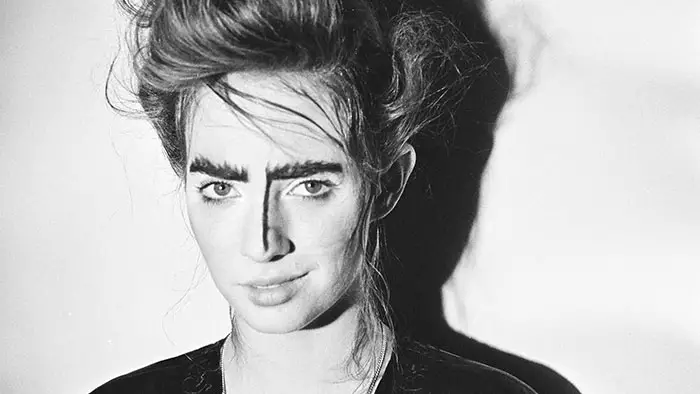
“I’m happy to hear you found the nature of his existence ambiguous…”
There’s a natural, palpable chemistry between the actors. Can you talk a little about the casting process?
Amanda: Without a casting director, the path toward production seemed clear: I’d have to use intuition over resources in order to find the most talented/game cast. This led to coffees and conversation. I didn’t audition anyone. And with each actress I hired, I’d ask, “Do you have any actress friends you think would be good in the film or good in a specific role?” And they’d send references and essentially do the next bit of casting for me. It was an extremely organic process that ignored and defied any star meter, IMDB credits, the agent system, etc. So cool.
Callie Ryan’s score fuses with the narrative; it’s so essential, it makes Ladyworld more of an audio-visual experience than any rudimentary “thriller.” Can you talk a little bit about the creative process behind the soundtrack, as well as your favorite / most influential film scores?
Ben: The score and sound design was a three-pronged baton pass: I created a temp score using the music of Meredith Monk and Joan LaBarbara in the edit. From there, Callie Ryan manifested her utterly insane score. All of the voices are hers by the way, which she recorded in her Mom’s house – who naturally grew concerned listening to her daughter SCREAMING repeatedly for hours.
The final collaborators were the sound design team Bryan Scary and Giulio Carmassi, who really built out the atmosphere. The air in that house consists of groans and whispers and gurgling and wood splintering. That’s all Bryan and Giulio.
The overarching goal throughout was to embody a collective deteriorating psychology; the mania, the stress, the tension between the beautiful and the grotesque- in essence the sonic embodiment of Frau Welt.
The response to the film’s sound has honestly been overwhelming. We did something extreme and expressionistic, and I’m overjoyed that it’s connected with audiences. Though one online comment did say it sounded like, “A bag of cats being tortured.” Honestly, I don’t disagree.
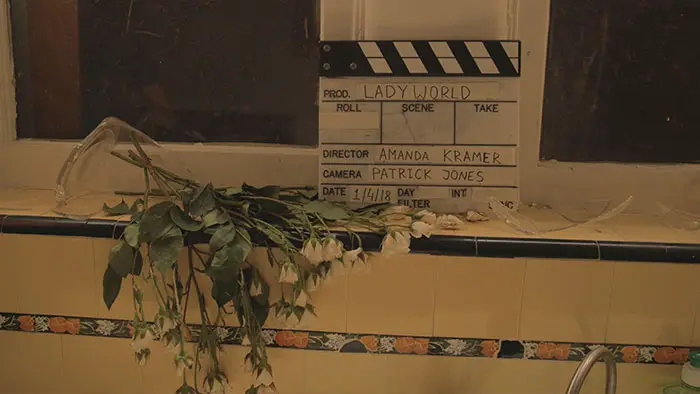
“I’d ask, ‘Do you have any actress friends you think would be good in the film or good in a specific role?’”
Let’s talk about some of the films that inspired you. Were there any particular films you studied – or had your cast watch – in preparation for the shoot?
Amanda: Fassbinder’s Fear of Fear. Lots of Michael Ballhaus. I made the girls watch Gena Rowlands in A Woman Under the Influence and Isabelle Adjani in Possession. But mostly I found my inspiration in the old masters of the Dutch Golden Age, the portraits of Rineke Dijkstra, the 90’s fashion photography of Craig McDean, the compositions of Meredith Monk.
Ben: I have nothing to add. That’s the stew.
Early on, one of the girls slips and seems to hurt herself quite badly. The rest of the girls observe her squealing in pain impassively. What were the implications behind this memorable sequence?
Amanda: I thought it would be rad if no one cared. They know she isn’t hurt. They’re witnessing an overreaction. Manipulation, games, tactics for empathy – Ben and I are dropping these motifs throughout the screenplay.
Ben: She’s just whining. 9 out of 10 times when someone’s told me they’ve just “broke” something, they’ve just whining. Just my experience.
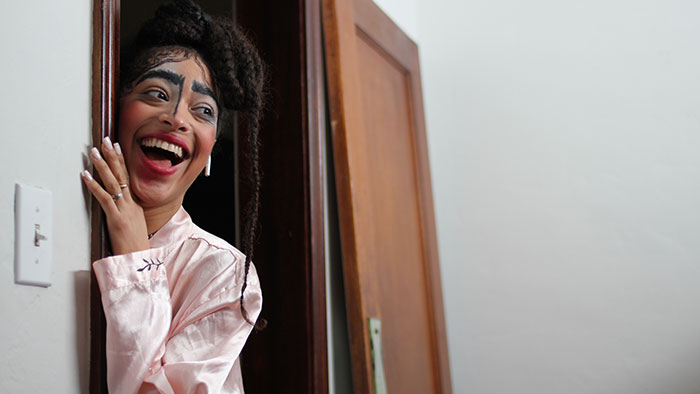
“Everyone is always going to try to discredit or invalidate your work if it doesn’t look expensive…”
Did the claustrophobia leak into the real world? In other words, were there moments when fiction and reality blurred during the shoot?
Amanda: You’d have to ask my cinematographer Patrick, a 6”5’ man crammed into a bathtub with an Alexa and his 1st AC. He might’ve felt a bit of madness though he never showed it. Consummate professional.
Having finished two micro-budget features – Ladyworld and Paris, Window – feel free to drop a nugget of wisdom on all the aspiring filmmakers out there.
Amanda: Capital doesn’t create aesthetic. Nor does it build taste. Everyone is always going to try to discredit or invalidate your work if it doesn’t look expensive. They can go f**k themselves for that.
Ben: Wow. Definitely nothing to add.
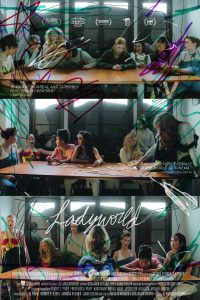

Wow! Amanda and Ben are brilliant screenwriters They make a great team and I can’t wait to see the film